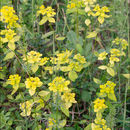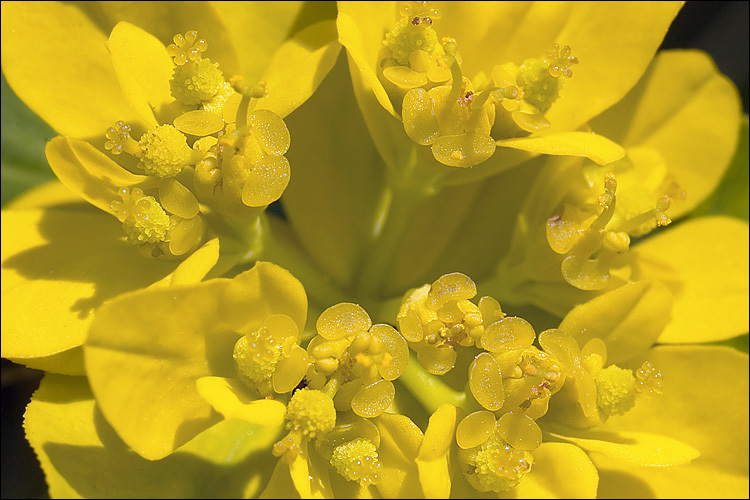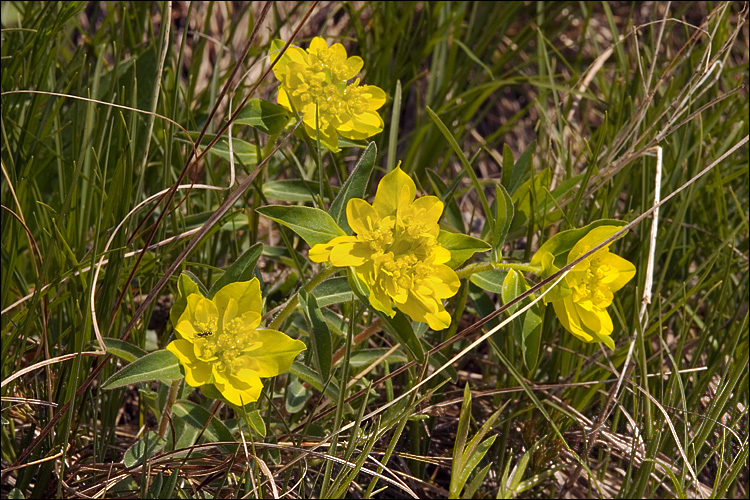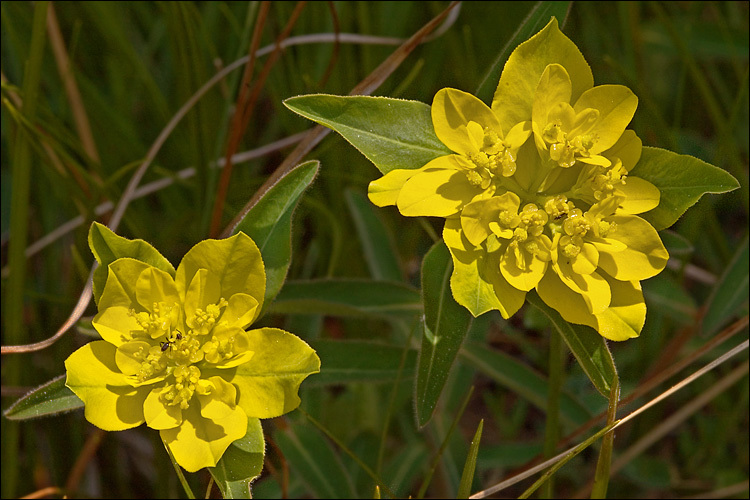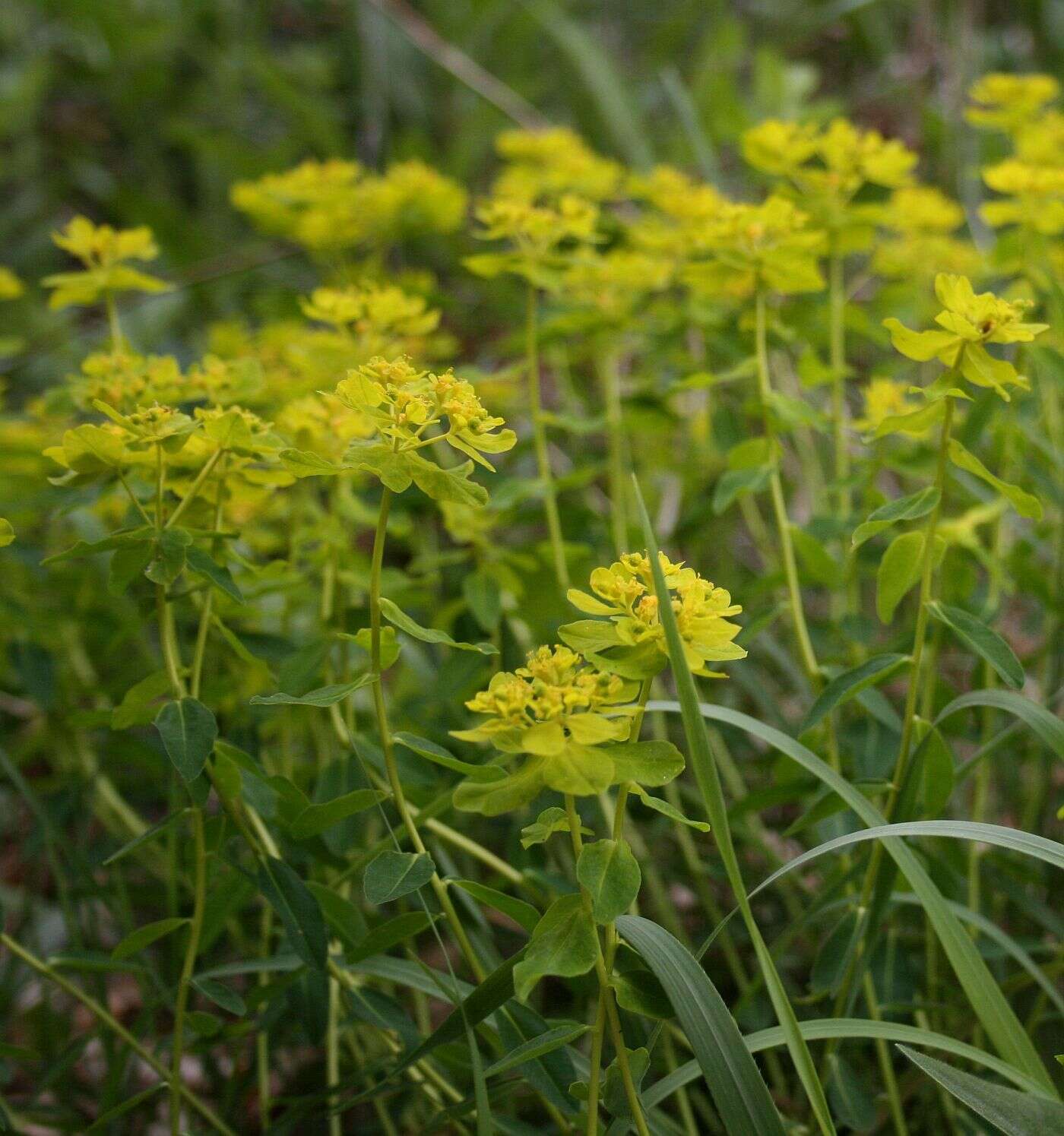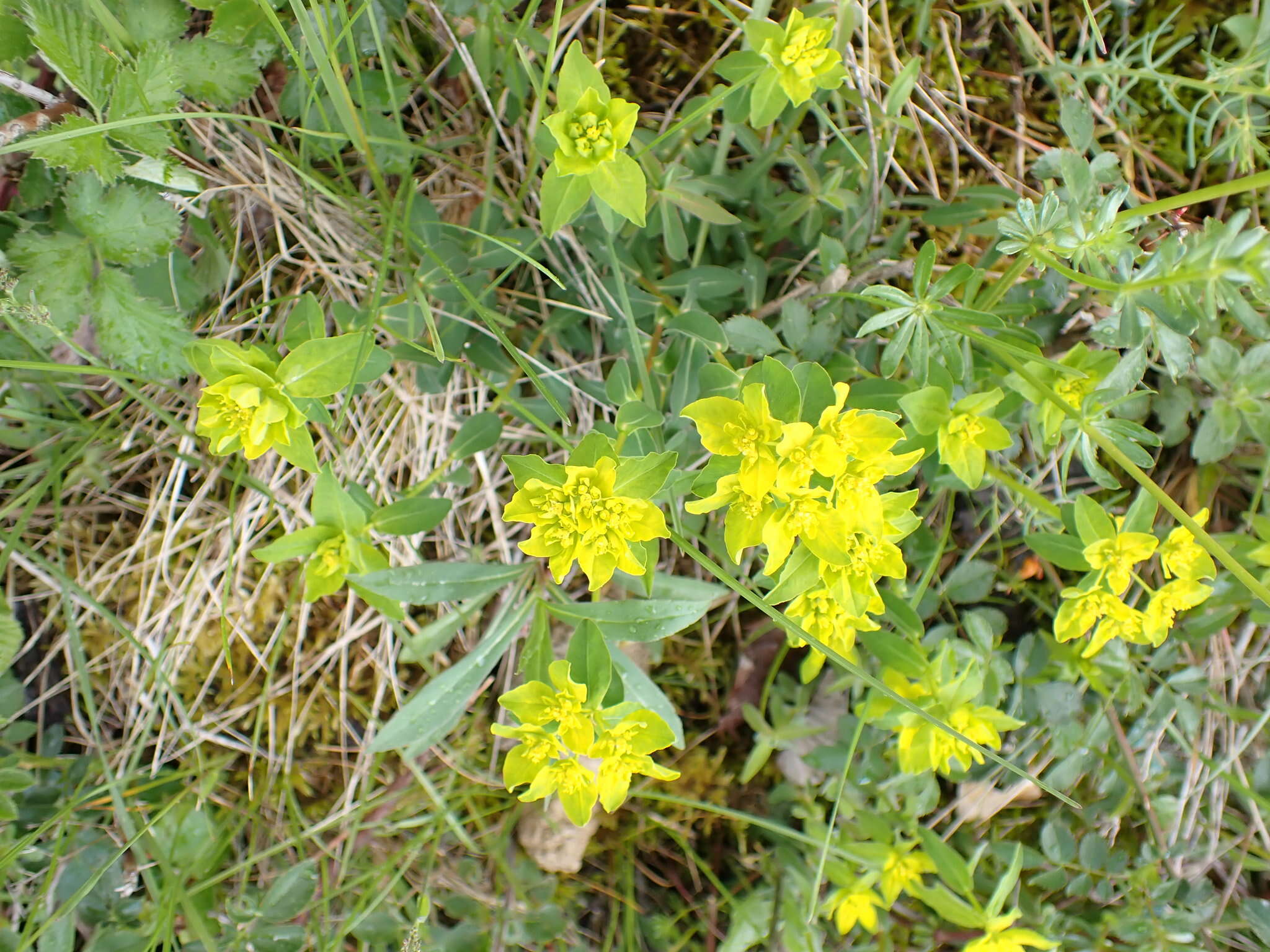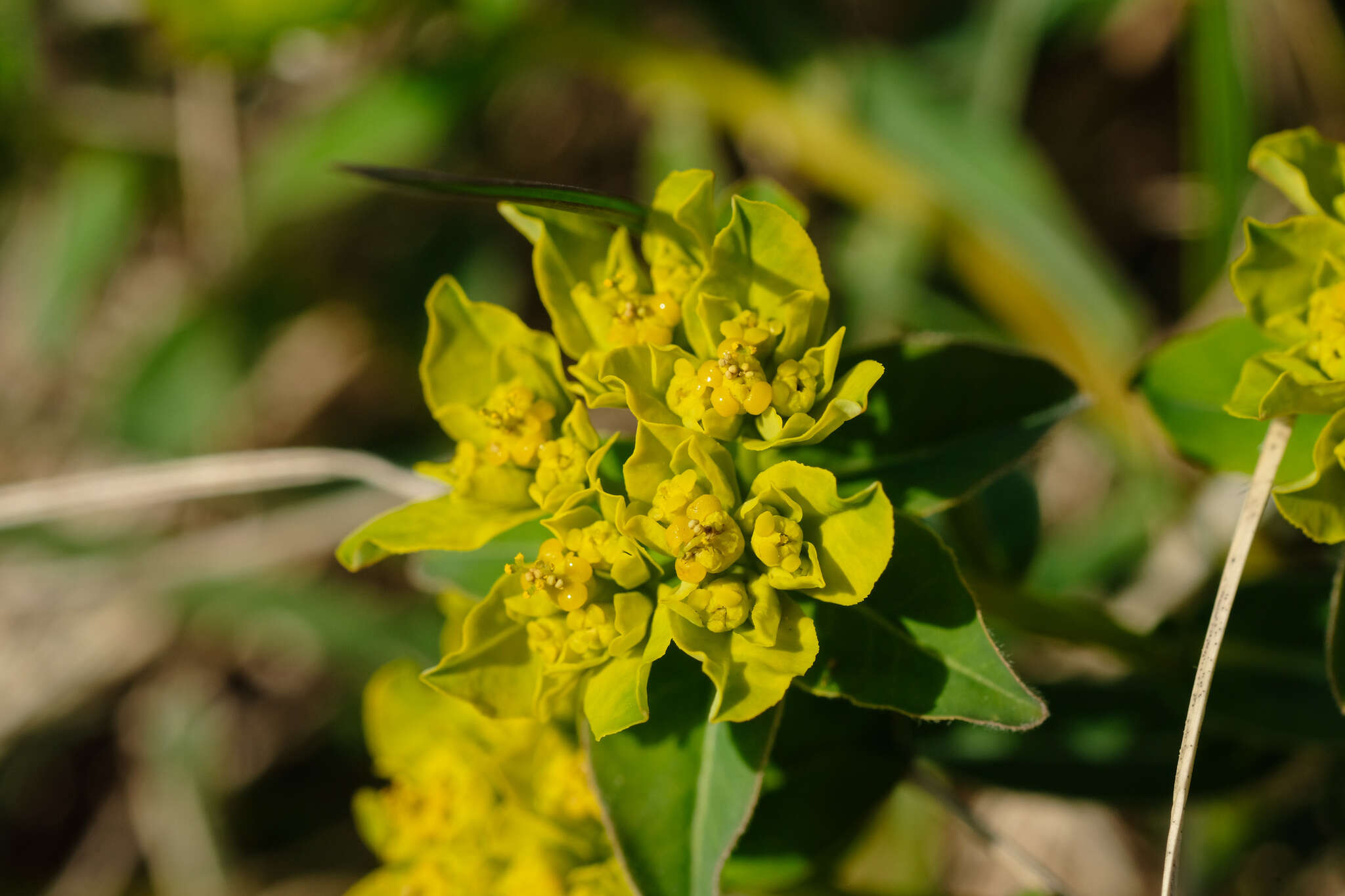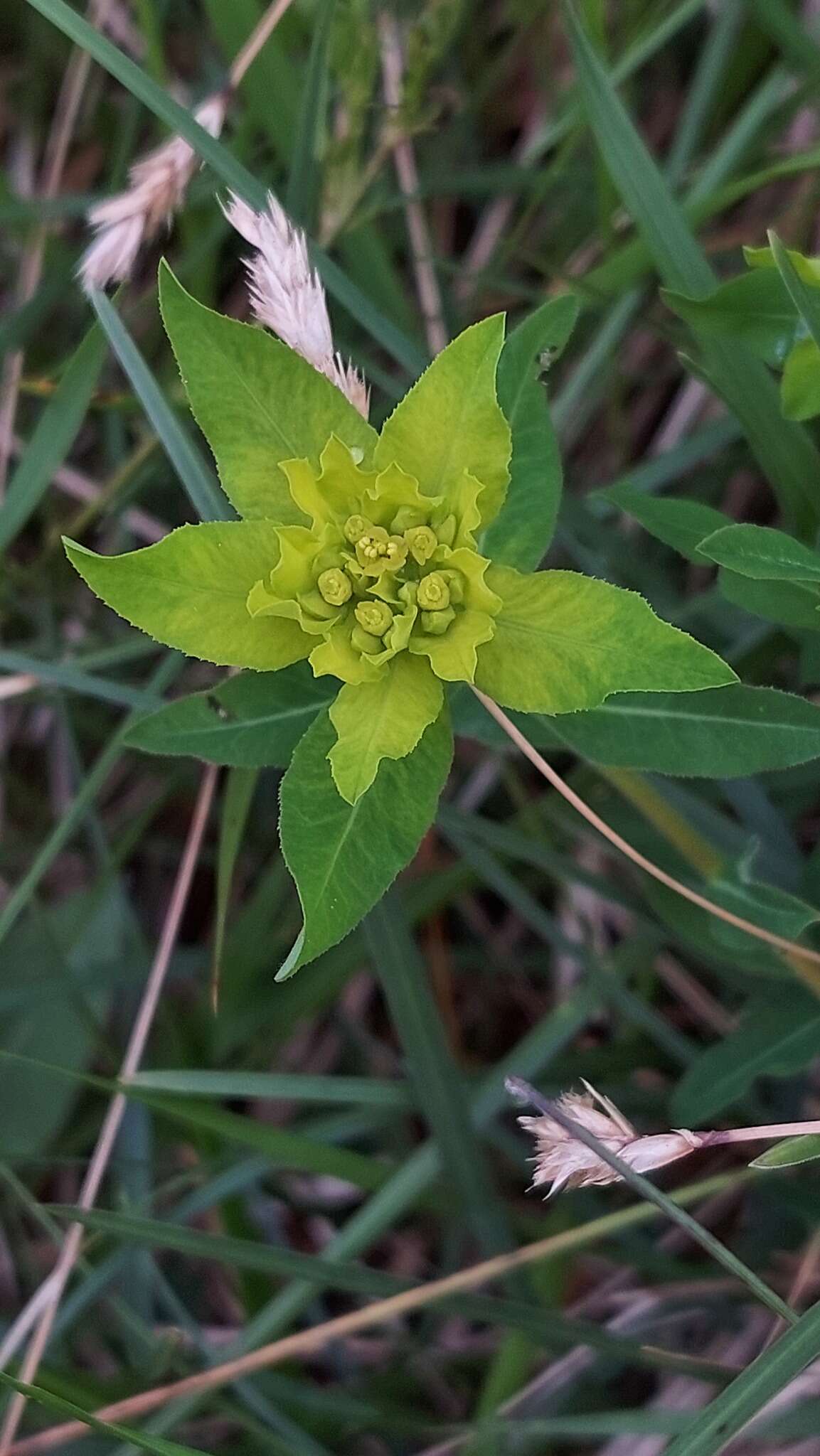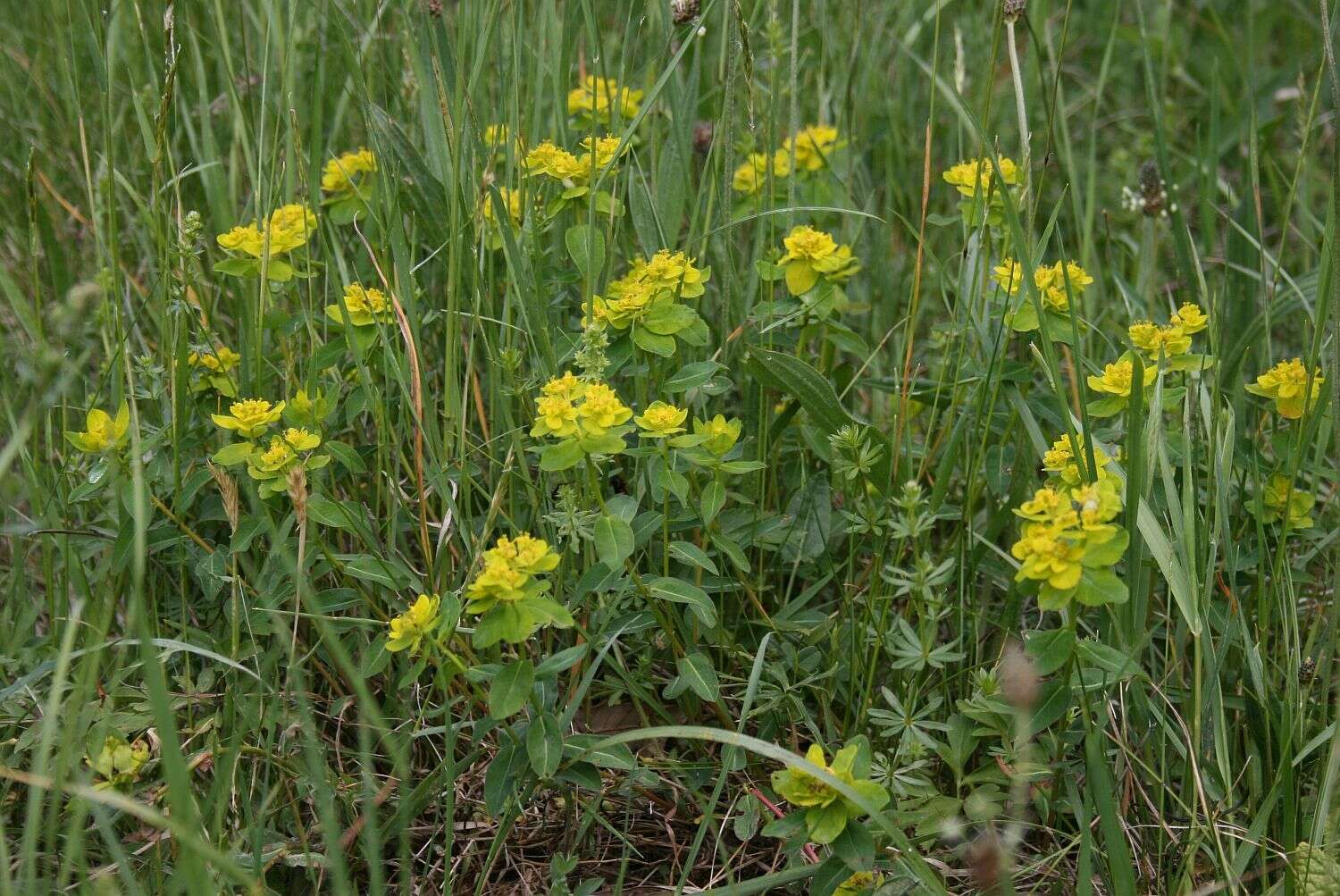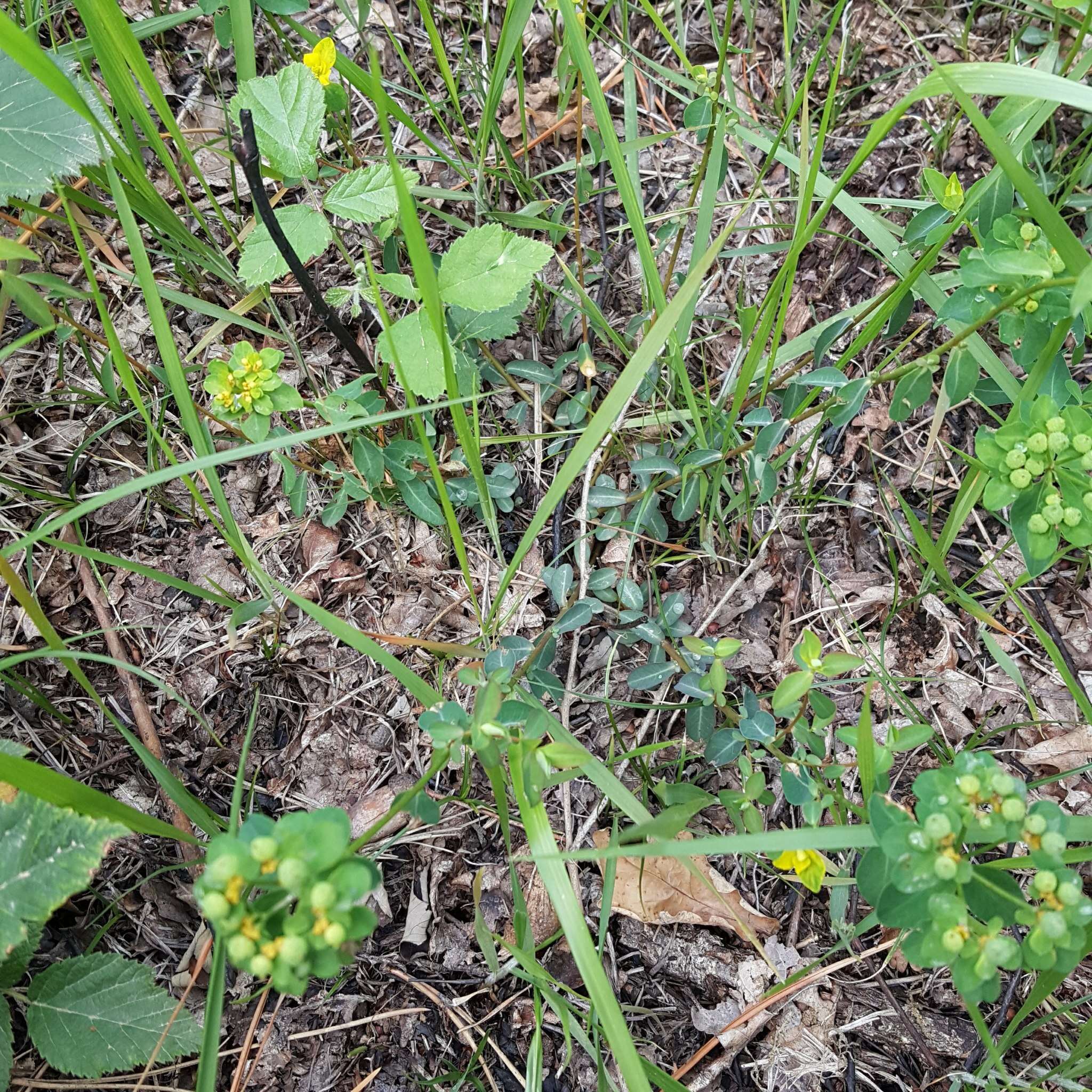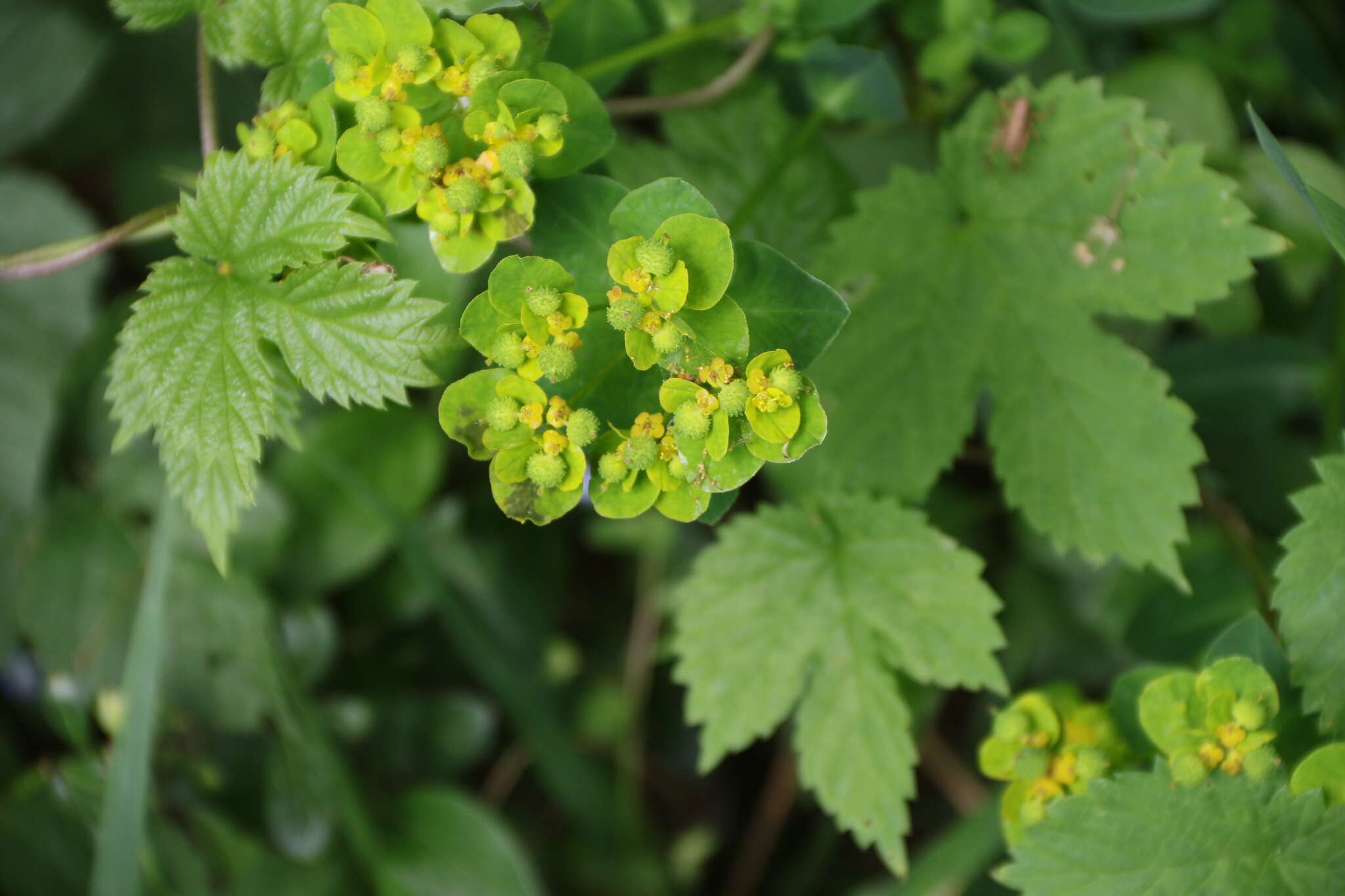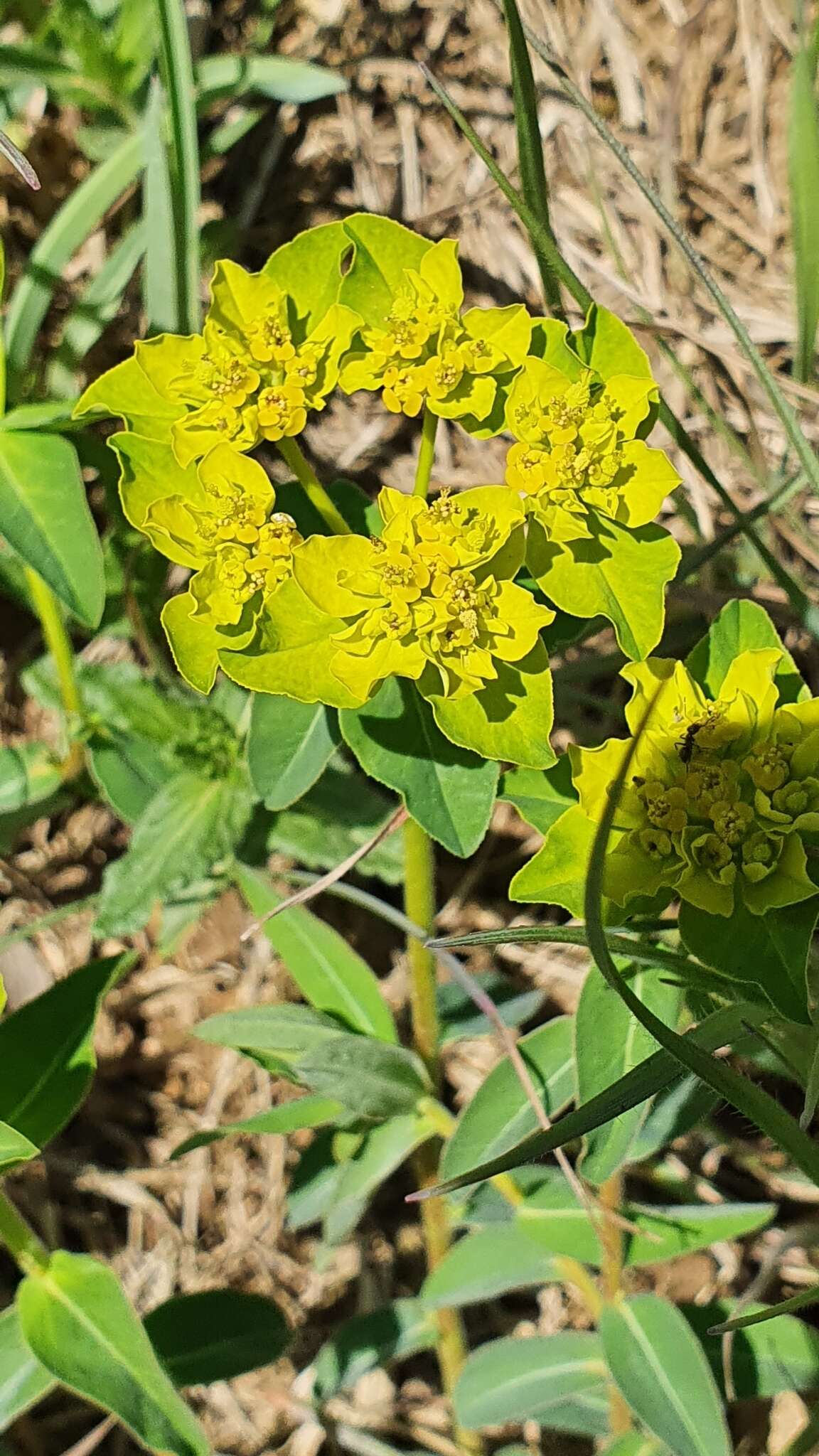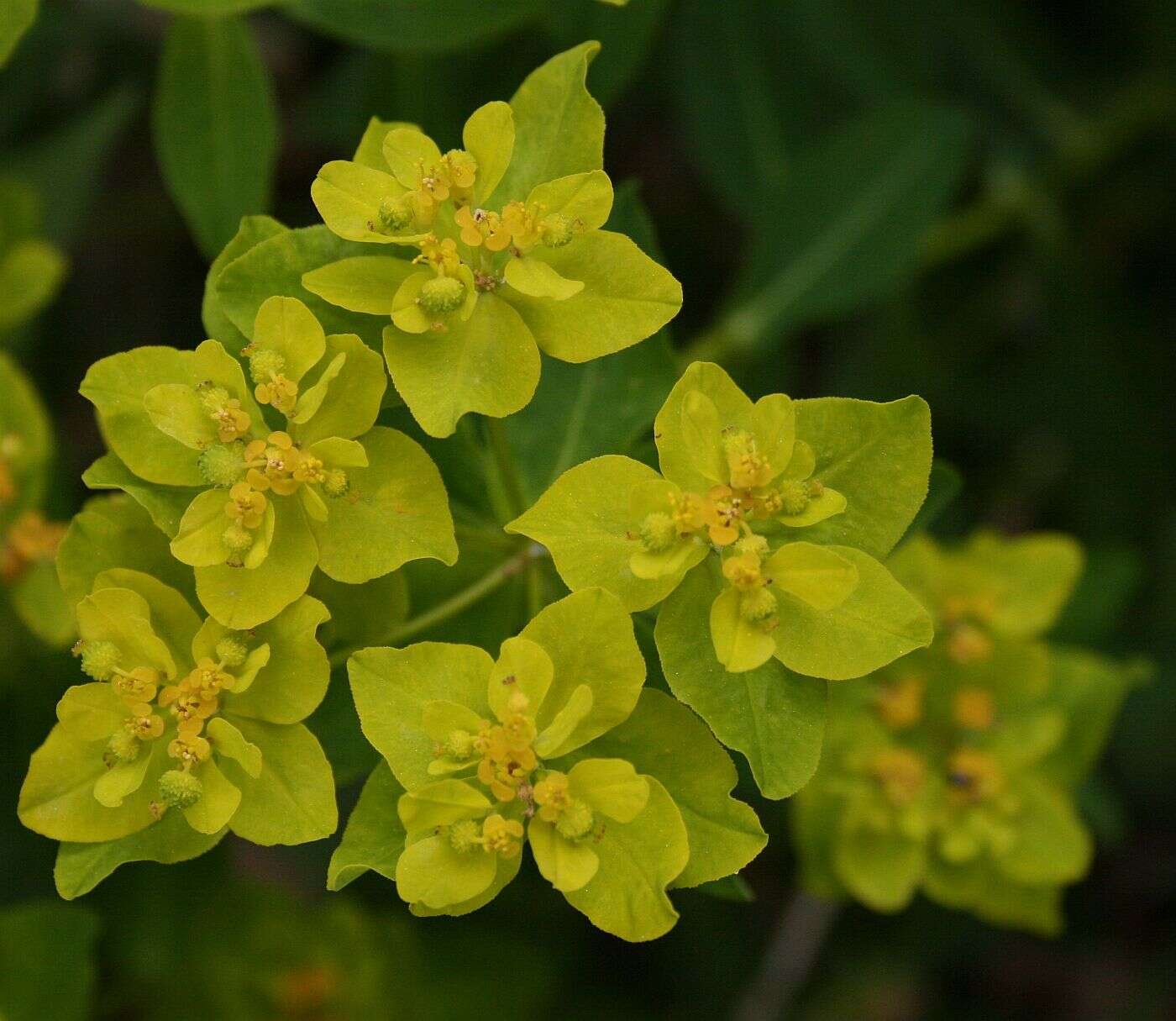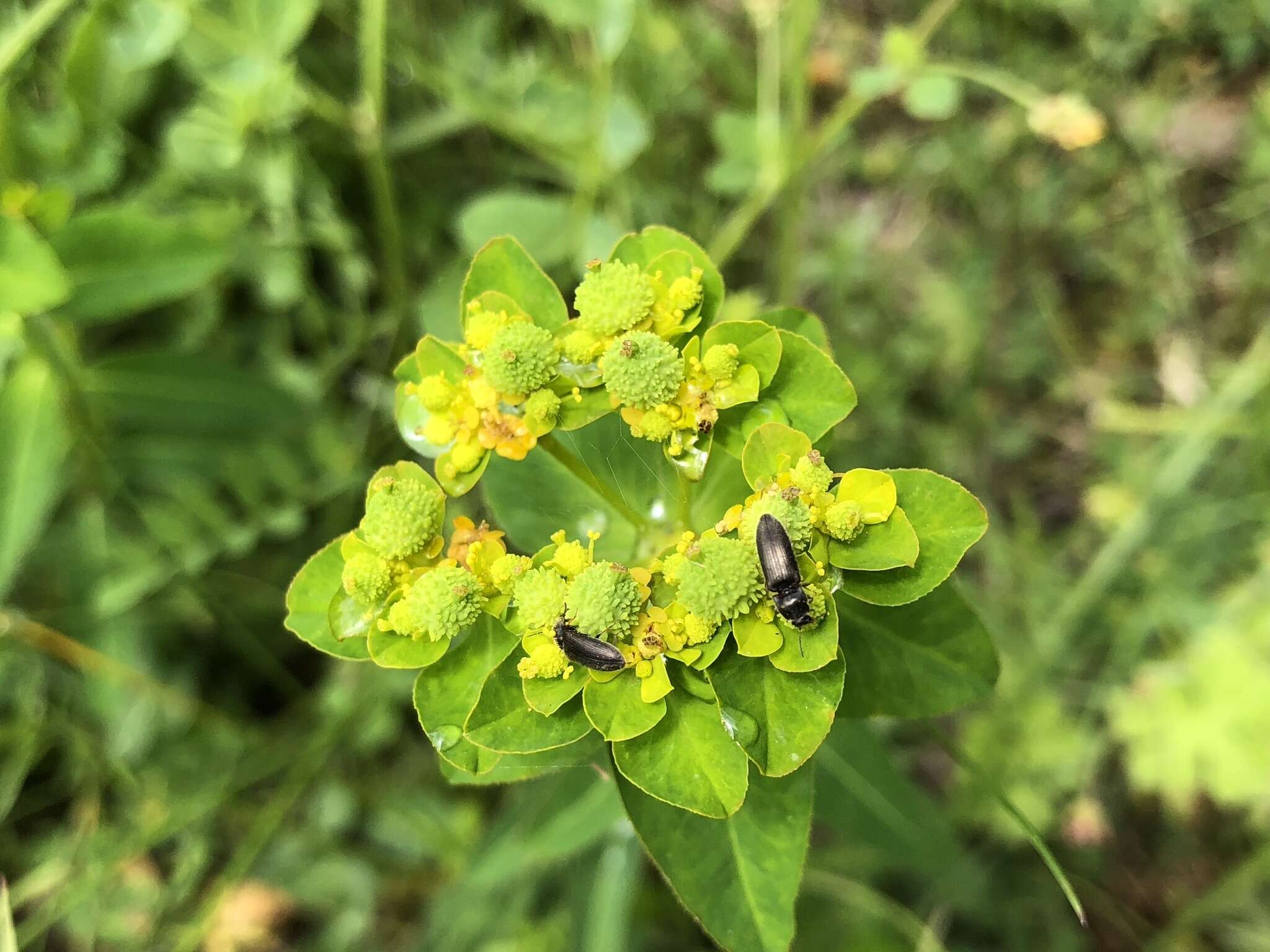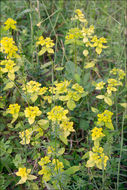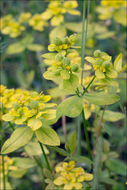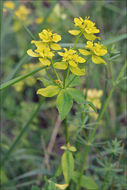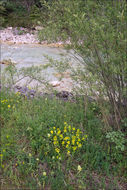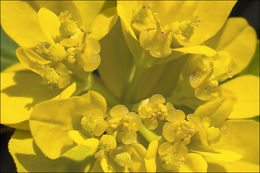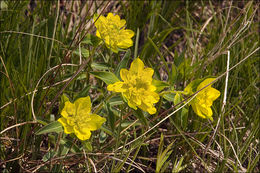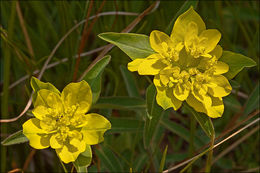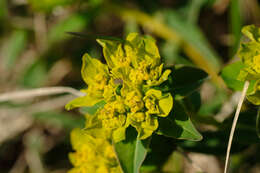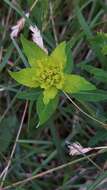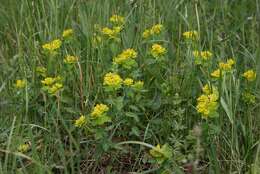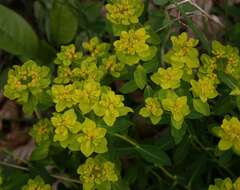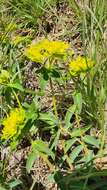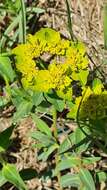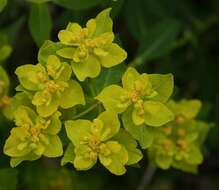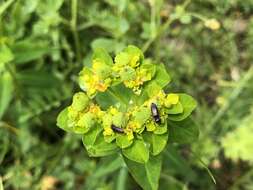-

Slo. bradaviasti mleek - syn.: Tithymalus verrucosus (L.) Hill, Euphorbia brittingeri Opiz - Habitat: grassland, between a trail and river bank, flat terrain next to a river; alluvial, skeletal ground; calcareous ground; sunny, open, rather dry place; exposed to direct rain; elevation 580 m (1.900 feet); average precipitations ~ 3.000 mm/year, average temperature 7-9 deg C, alpine phytogeographical region. Substratum: soil.Comment: Plants belonging to genus Euphorbia are very interesting and very diverse but usually easy to recognize, at least those, which grow in Slovenia. They have strangely shaped flowers and extrude white milk when cut or injured. However, determination to species level is not always easy. Fortunately Euphorbia verrucosa has very typical fruits, which are covered with conspicuous coarse warts. Their stalks at the ground level are woody. Most of species of this large genus (about 40 species grow in Slovenia) are poisonous, some severely. Growing in a group of several plants with many flowering stalks. Ref.:(1) M.A. Fischer, W. Adler, K. Oswald, Exkursionsflora fr sterreich, Liechtenstein und Sdtirol, LO Landesmuseen, Linz, Austria (2005), p 458.(2) A. Martini et all., Mala Flora Slovenije (Flora of Slovenia - Key) (in Slovenian), Tehnina Zaloba Slovenije (2007), p 368. (3) E.J. Jger, Rothmaler 3, Exkursionsflora von Deutschland, 11. Aufl., Elsevier, Spectrum (2007), p 206. (4) D. Aeschimann, K. Lauber, D.M. Moser, J.P. Theurillat, Flora Alpina, Vol. 1., Haupt (2004), p 1002.
-

Slo. bradaviasti mleek - syn.: Tithymalus verrucosus (L.) Hill, Euphorbia brittingeri Opiz - Habitat: grassland, between a trail and river bank, flat terrain next to a river; alluvial, skeletal ground; calcareous ground; sunny, open, rather dry place; exposed to direct rain; elevation 580 m (1.900 feet); average precipitations ~ 3.000 mm/year, average temperature 7-9 deg C, alpine phytogeographical region. Substratum: soil. Comment: Plants belonging to genus Euphorbia are very interesting and very diverse but usually easy to recognize, at least those, which grow in Slovenia. They have strangely shaped flowers and extrude white milk when cut or injured. However, determination to species level is not always easy. Fortunately Euphorbia verrucosa has very typical fruits, which are covered with conspicuous coarse warts. Their stalks at the ground level are woody. Most of species of this large genus (about 40 species grow in Slovenia) are poisonous, some severely. Growing in a group of several plants with many flowering stalks. Ref.: (1) M.A. Fischer, W. Adler, K. Oswald, Exkursionsflora fr sterreich, Liechtenstein und Sdtirol, LO Landesmuseen, Linz, Austria (2005), p 458. (2) A. Martini et all., Mala Flora Slovenije (Flora of Slovenia - Key) (in Slovenian), Tehnina Zaloba Slovenije (2007), p 368. (3) E.J. Jger, Rothmaler 3, Exkursionsflora von Deutschland, 11. Aufl., Elsevier, Spectrum (2007), p 206. (4) D. Aeschimann, K. Lauber, D.M. Moser, J.P. Theurillat, Flora Alpina, Vol. 1., Haupt (2004), p 1002.
-
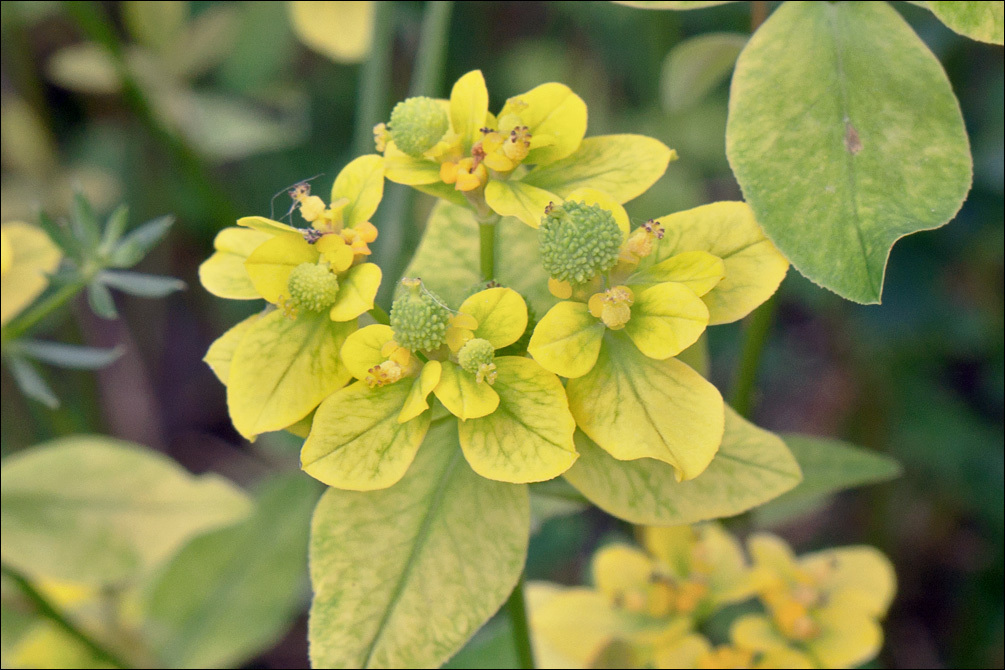
Slo. bradaviasti mleek - syn.: Tithymalus verrucosus (L.) Hill, Euphorbia brittingeri Opiz - Habitat: grassland, between a trail and river bank, flat terrain next to a river; alluvial, skeletal ground; calcareous ground; sunny, open, rather dry place; exposed to direct rain; elevation 580 m (1.900 feet); average precipitations ~ 3.000 mm/year, average temperature 7-9 deg C, alpine phytogeographical region. Substratum: soil. Comment: Plants belonging to genus Euphorbia are very interesting and very diverse but usually easy to recognize, at least those, which grow in Slovenia. They have strangely shaped flowers and extrude white milk when cut or injured. However, determination to species level is not always easy. Fortunately Euphorbia verrucosa has very typical fruits, which are covered with conspicuous coarse warts. Their stalks at the ground level are woody. Most of species of this large genus (about 40 species grow in Slovenia) are poisonous, some severely. Growing in a group of several plants with many flowering stalks. Ref.: (1) M.A. Fischer, W. Adler, K. Oswald, Exkursionsflora fr sterreich, Liechtenstein und Sdtirol, LO Landesmuseen, Linz, Austria (2005), p 458. (2) A. Martini et all., Mala Flora Slovenije (Flora of Slovenia - Key) (in Slovenian), Tehnina Zaloba Slovenije (2007), p 368. (3) E.J. Jger, Rothmaler 3, Exkursionsflora von Deutschland, 11. Aufl., Elsevier, Spectrum (2007), p 206. (4) D. Aeschimann, K. Lauber, D.M. Moser, J.P. Theurillat, Flora Alpina, Vol. 1., Haupt (2004), p 1002.
-
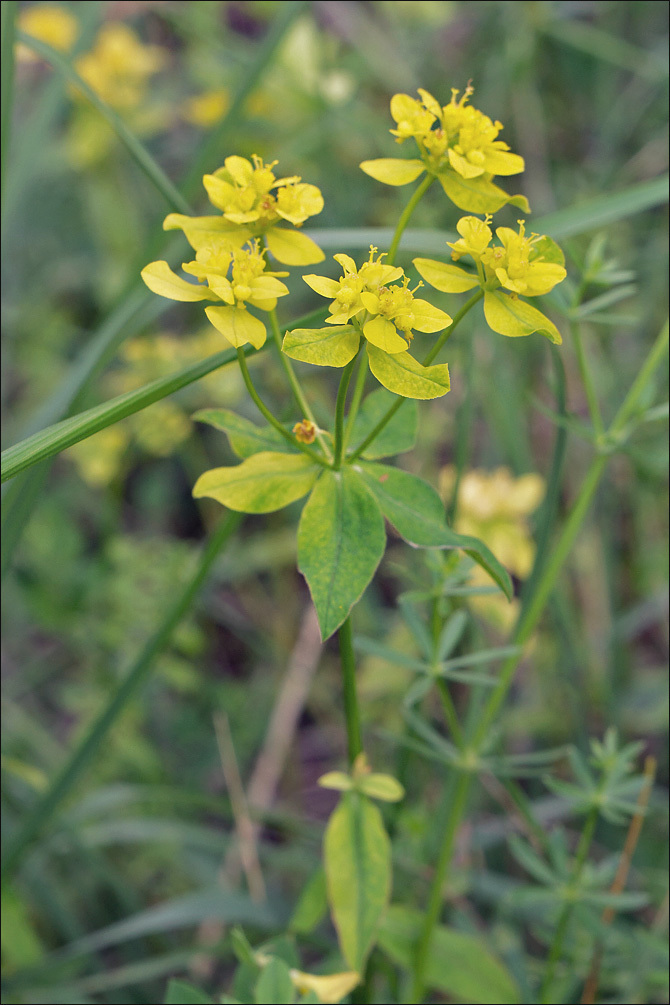
Slo. bradaviasti mleek - syn.: Tithymalus verrucosus (L.) Hill, Euphorbia brittingeri Opiz - Habitat: grassland, between a trail and river bank, flat terrain next to a river; alluvial, skeletal ground; calcareous ground; sunny, open, rather dry place; exposed to direct rain; elevation 580 m (1.900 feet); average precipitations ~ 3.000 mm/year, average temperature 7-9 deg C, alpine phytogeographical region. Substratum: soil. Comment: Plants belonging to genus Euphorbia are very interesting and very diverse but usually easy to recognize, at least those, which grow in Slovenia. They have strangely shaped flowers and extrude white milk when cut or injured. However, determination to species level is not always easy. Fortunately Euphorbia verrucosa has very typical fruits, which are covered with conspicuous coarse warts. Their stalks at the ground level are woody. Most of species of this large genus (about 40 species grow in Slovenia) are poisonous, some severely. Growing in a group of several plants with many flowering stalks. Ref.: (1) M.A. Fischer, W. Adler, K. Oswald, Exkursionsflora fr sterreich, Liechtenstein und Sdtirol, LO Landesmuseen, Linz, Austria (2005), p 458. (2) A. Martini et all., Mala Flora Slovenije (Flora of Slovenia - Key) (in Slovenian), Tehnina Zaloba Slovenije (2007), p 368. (3) E.J. Jger, Rothmaler 3, Exkursionsflora von Deutschland, 11. Aufl., Elsevier, Spectrum (2007), p 206. (4) D. Aeschimann, K. Lauber, D.M. Moser, J.P. Theurillat, Flora Alpina, Vol. 1., Haupt (2004), p 1002.
-

Slo. bradaviasti mleek - syn.: Tithymalus verrucosus (L.) Hill, Euphorbia brittingeri Opiz - Habitat: grassland, between a trail and river bank, flat terrain next to a river; alluvial, skeletal ground; calcareous ground; sunny, open, rather dry place; exposed to direct rain; elevation 580 m (1.900 feet); average precipitations ~ 3.000 mm/year, average temperature 7-9 deg C, alpine phytogeographical region. Substratum: soil. Comment: Plants belonging to genus Euphorbia are very interesting and very diverse but usually easy to recognize, at least those, which grow in Slovenia. They have strangely shaped flowers and extrude white milk when cut or injured. However, determination to species level is not always easy. Fortunately Euphorbia verrucosa has very typical fruits, which are covered with conspicuous coarse warts. Their stalks at the ground level are woody. Most of species of this large genus (about 40 species grow in Slovenia) are poisonous, some severely. Growing in a group of several plants with many flowering stalks. Ref.: (1) M.A. Fischer, W. Adler, K. Oswald, Exkursionsflora fr sterreich, Liechtenstein und Sdtirol, LO Landesmuseen, Linz, Austria (2005), p 458. (2) A. Martini et all., Mala Flora Slovenije (Flora of Slovenia - Key) (in Slovenian), Tehnina Zaloba Slovenije (2007), p 368. (3) E.J. Jger, Rothmaler 3, Exkursionsflora von Deutschland, 11. Aufl., Elsevier, Spectrum (2007), p 206. (4) D. Aeschimann, K. Lauber, D.M. Moser, J.P. Theurillat, Flora Alpina, Vol. 1., Haupt (2004), p 1002.
-
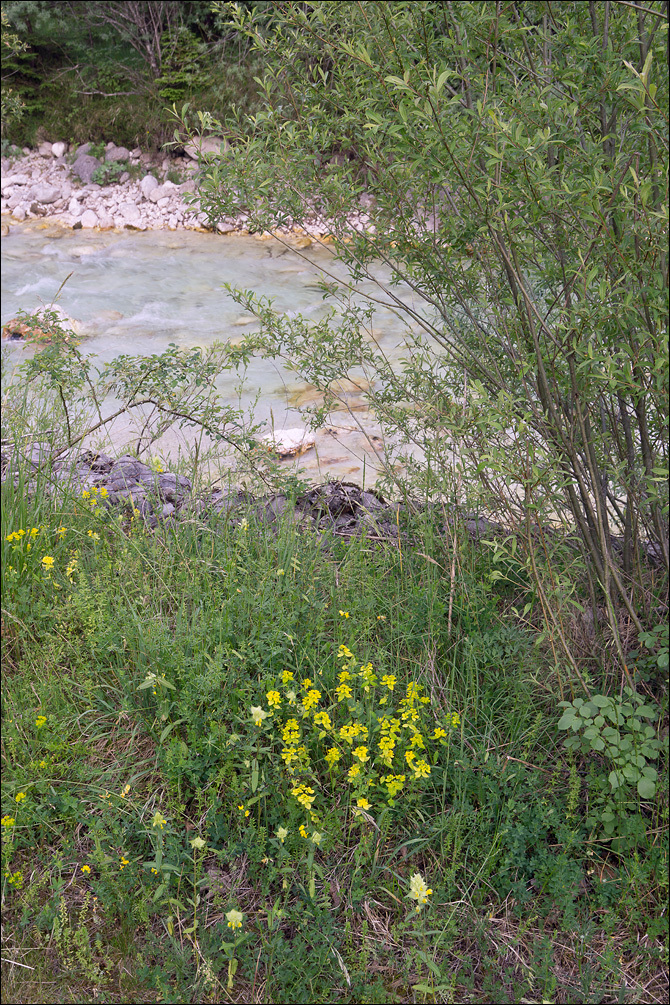
Slo. bradaviasti mleek - syn.: Tithymalus verrucosus (L.) Hill, Euphorbia brittingeri Opiz - Habitat: grassland, between a trail and river bank, flat terrain next to a river; alluvial, skeletal ground; calcareous ground; sunny, open, rather dry place; exposed to direct rain; elevation 580 m (1.900 feet); average precipitations ~ 3.000 mm/year, average temperature 7-9 deg C, alpine phytogeographical region. Substratum: soil. Comment: Plants belonging to genus Euphorbia are very interesting and very diverse but usually easy to recognize, at least those, which grow in Slovenia. They have strangely shaped flowers and extrude white milk when cut or injured. However, determination to species level is not always easy. Fortunately Euphorbia verrucosa has very typical fruits, which are covered with conspicuous coarse warts. Their stalks at the ground level are woody. Most of species of this large genus (about 40 species grow in Slovenia) are poisonous, some severely. Growing in a group of several plants with many flowering stalks. Ref.: (1) M.A. Fischer, W. Adler, K. Oswald, Exkursionsflora fr sterreich, Liechtenstein und Sdtirol, LO Landesmuseen, Linz, Austria (2005), p 458. (2) A. Martini et all., Mala Flora Slovenije (Flora of Slovenia - Key) (in Slovenian), Tehnina Zaloba Slovenije (2007), p 368. (3) E.J. Jger, Rothmaler 3, Exkursionsflora von Deutschland, 11. Aufl., Elsevier, Spectrum (2007), p 206. (4) D. Aeschimann, K. Lauber, D.M. Moser, J.P. Theurillat, Flora Alpina, Vol. 1., Haupt (2004), p 1002.
-
Slo. bradavicasti mlecek
-
Slo. bradavicasti mlecek
-
Slo. bradavicasti mlecek
-
-
-
-
-
-
-
-
-
-
-
-
-
-
-

